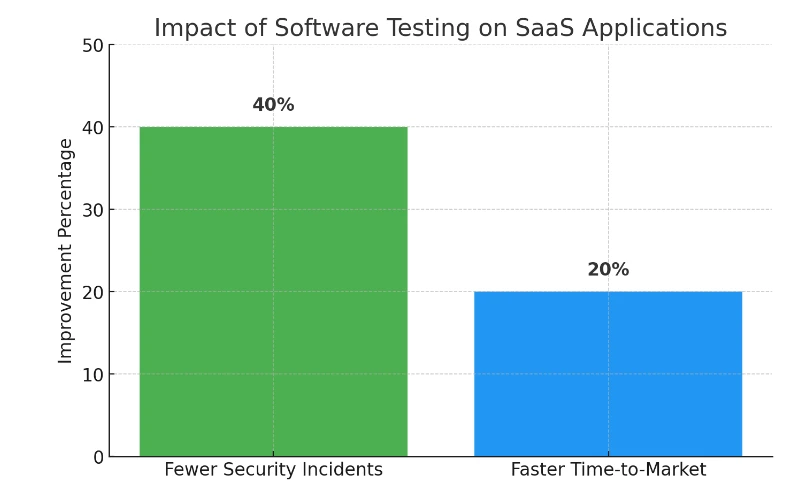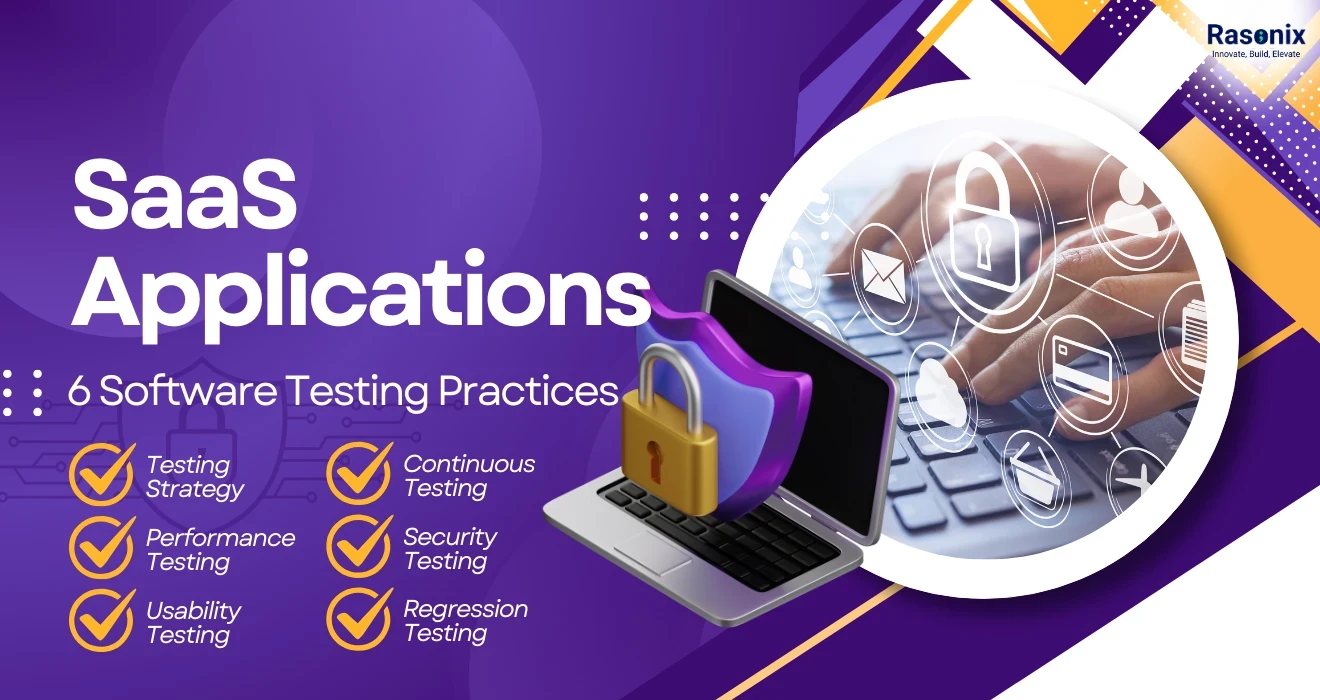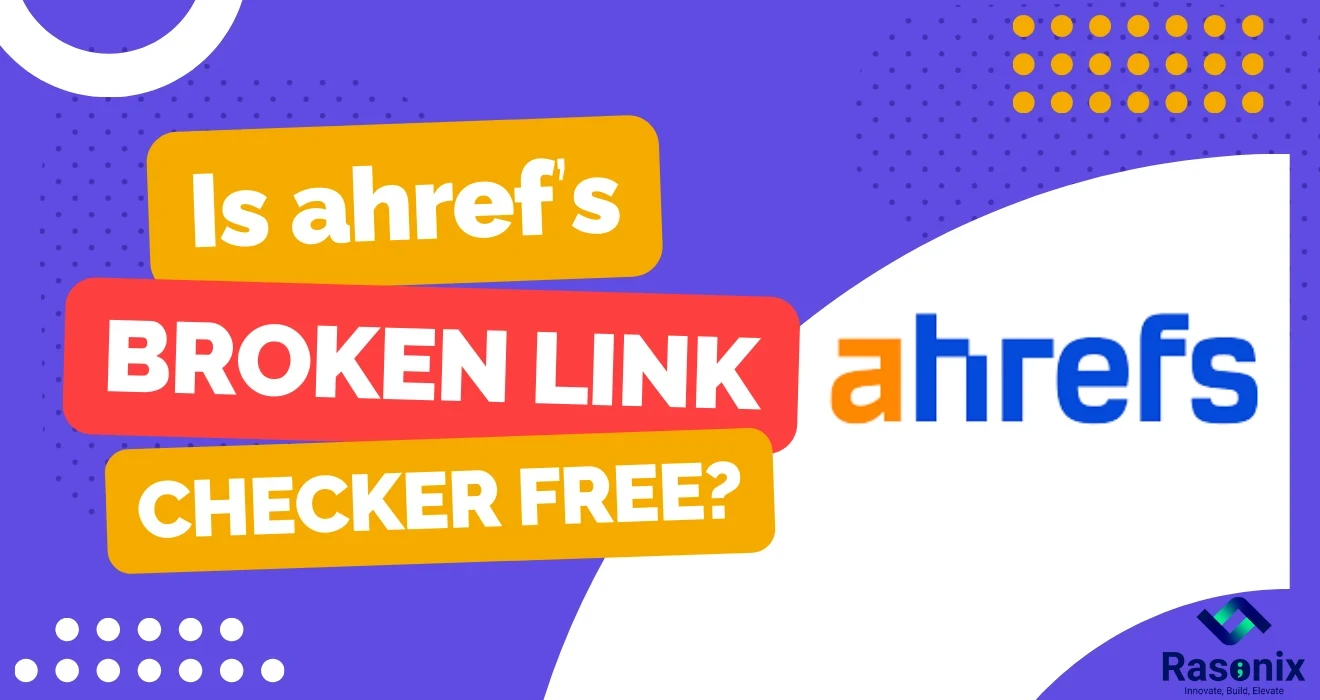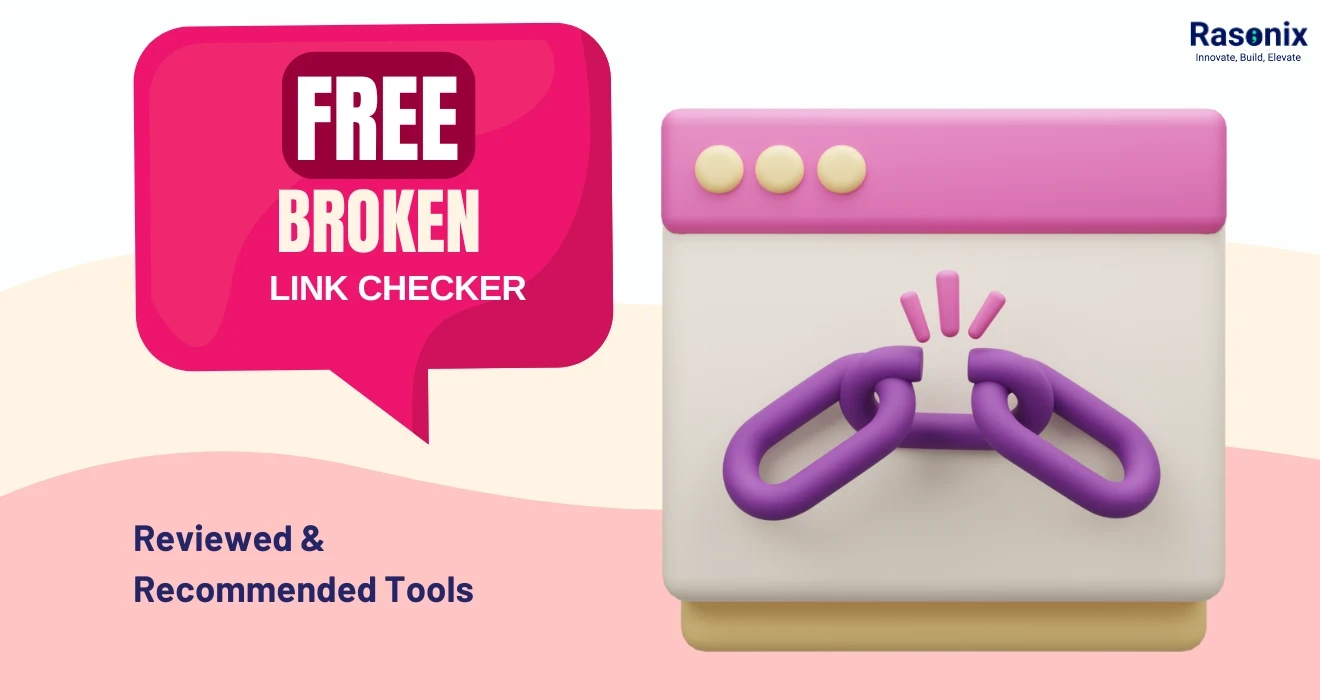Think about this: a SaaS application fails at peak hour, frustrating an enormous number of users; or worse, a data breach exposes customers' confidential information, in a huge privacy breach. IBM's Cost of a Data Breach Report states that in 2024 alone, data breaches incurred a cost of $4.45 million per company. Sounds like a nightmare, does it? That is why software testing practices for saas applications are a requirement rather than a suggestion.
Instead of testing in the form of traditional software testing, SaaS applications run in the cloud and will be continuously updated and deployed. In cloud environments, SaaS applications change continually and are maintained with deployments. Such applications will require testing to ensure their performance, security and usability are emphasized.
The Growth of SaaS and Testing Challenges
The SaaS sector is thriving, with the world SaaS market anticipated to touch $908.21 billion in 2030. Growth is accompanied by greater competition, and hence testing practices for SaaS applications become vital to be successful. Those firms that have a strong emphasis on testing suffer 40% less security problems and 20% quicker time-to-market for new features.

Why is Testing SaaS Products Different from Traditional Software Testing?
SaaS applications are hard to test because they are dependent on the cloud. Some of the most notable differences are:
1. Scalability & Multi-Tenancy: One of the most important characteristics of a SaaS application is the ability to handle many users, often dispersed geographically. Indeed, 73% of companies using SaaS use a multi-tenancy model.
2. Continuous Deployment: SaaS providers will release updates 4 - 6 times more frequently than traditional software vendors.
3. Security Concerns: 60% of compromised data relate to third-party app issues.
4. Cross-Device & Cross-Browser Compatibility: 58% of all users interact with a SaaS application from their mobile phones. Cross-device testing becomes all the more significant in such cases.
5. Network Dependency: Performance is controlled by various network speeds and server speeds. Further, one second of extra latency can raise abandonment by 32%.
How Does the Cloud Environment Influence SaaS Testing?
SaaS applications execute in a cloud computing SaaS environment - an alternate implementation of monolithic local software. This entails that:
1. Performance testing should always take into account that the application will experience network latency, bandwidth variation, and CPU/RAM load of the SaaS application itself.
2. Security testing should be able to support encryption, authentication, and authentication vulnerability testing against APIs.
3. Automated testing is needed so that the application can get updated regularly without downtime.
Core Software Testing Practices for SaaS Applications
1. Develop a Comprehensive SaaS Testing Strategy

A good SaaS application testing strategy should entail:
1. Risks: Pinpointing major areas that need utmost attention.
2. Prioritization: Prioritize security, performance, and usability.
3. Automation and Continuous Testing: Implement CI/CD pipelines to simplify testing.
4. Tools: Leverage the best SaaS testing tools such as Selenium, JMeter, and Postman.
2. Execute Continuous Testing

Continuous software testing practices for saas applications ensures that constant updates do not bring about bugs.This will benefit SaaS applications in the following manners:
1. Test automation provides little human error.
2. Frequent testing enables problems to be detected early.
3. CI/CD pipelines enhance reliability and deployment speed.
According to Capgemini, automated testing enhances software quality by 31% while decreasing costs by 23%.
3. Give top priority to Performance Testing

Performance testing is a must for any SaaS application. The main areas will be:
1. Load Testing: Analyze how the system responds to the expected number of users. Research indicates a 1-second delay can lower conversions by 7%.
2. Stress Testing: Determine breaking points for an unreasonable amount of traffic.
3. Scalability Testing: Confirm smooth performance as user count increases. Amazon Web Services (AWS), for instance, processes 2 billion requests in a day, and this demonstrates its scalability.
4. Latency Testing: Analyze the response time and performance degradation against network conditions. Google indicated 53% of users would leave mobile sites that load in over 3 seconds.
4. Secure Reliable Security Testing

SaaS applications handle sensitive data, therefore security is a critical concern. The most important security tests are:
1. Vulnerability Scanning: Identify weak spots
2. Penetration Testing: Simulate cyber attacks to uncover vulnerabilities
3. Data Encryption Testing: Ensure encryption protocols are strong. 84% of SaaS breaches are attributed to weak authentication. (Cybersecurity Ventures)
4. Authentication Testing: Verify login mechanisms and access controls.
5. Focus on Usability Testing

Great user experience is crucial to the success of SaaS apps. Usability testing involves:
User Feedback: Get actual user feedback.
1. Accessibility Testing: Make sure the application is accessible and follows accessibility guidelines. 15% of the world's population has disabilities, so an accessible application is critical.
2. Cross-Browser & Cross-Device Testing: You want the users to have a smooth experience across various platforms.
3. User Journey Mapping: Create a map of the way that users use the application. Information can also be gathered from heatmaps and session recordings using tools such as Hotjar.
6. Automate Regression Testing

Regression testing is a form of testing that assists in ensuring that current functionality is not altered by new code, particularly as the codebase is altered regularly. There are benefits to employing this form of testing:
1. Faster detection of problems.
2. Less human effort.
3. More reliable software.
Forrester says that organizations using automated regression testing can achieve a 45% decrease in defects after release.
The 4 Basic Types of Software Testing
Software testing is a critical process in development, ensuring applications act as they are supposed to, perform at their best, are secure, and provide a seamless user experience. Let's examine four basic types of software testing practices for saas applications in more detail:
1. Functional Testing:
Imagine working with a banking app that doesn't process transactions correctly so infuriating. Functional testing ensures that everything about an application works as it is supposed to. That means testing for correct input and output, business logic checks, and that the software responds in the right way in real life scenarios. It offers the simple but essential answer: Does the software really do what it is supposed to?
2. Performance Testing:
No one desires a crashing or slow app, particularly at high usage times.
Performance testing will determine how well an application performs under different situations, including heavy traffic, high data loads, and various network speeds. It tests for factors like response time, scalability, and stability to make sure the system does not crash under load. Whether an eCommerce website at the peak of Black Friday or a streaming website with thousands of users, performance testing is the icing on "the holidays" for your application.
3. Security Testing:
In a rapidly digitalizing world filled with cyber threats, security testing in today's times is more crucial than ever. Security testing reveals weaknesses, safeguards confidential data, and ensures users are not exposed to dangers like hacking, data leakage, malware, etc. Multiple security practices like encryption, authentication, and penetration testing are applied to secure an application against threats. No one, after all, would like to download an application that would risk their own information.
4. Usability Testing:
A software application may be functional, fast, and secure, but if the user can't figure it out, it'll be a failure. Again, usability is about the human aspect, making the interface nearly second nature, simple to locate, and enjoyable to interact with.
Usability testing means testing actual users to discover what the areas of pain are and enhancing design, and usability in general. An app must be intuitive and easy to navigate, leading users effortlessly to where they are headed without confusion or frustration.
What Are the Three Main Testing Strategies in Software Testing?
In software testing practices for saas applications, different methods help to verify that an application is functional, secure, and dependable. Three of the core testing methods such as Black Box, White Box, and Grey Box Testing. All three aim at a specific point. Let's break them down in a logical way.
1. Black Box Testing:
Take the example of Black Box Testing using a vending machine. You insert money, press a button, and wait for your desired snack to drop. You are not interested in what happens inside the machine, just the output.
In software testing, it means testing the application based on input and output without worrying about the internal code. Testers enter some things, observe what occurs, and check if the software is working correctly. This method is great for functional testing as it replicates the user's perspective.
| Best suited for |
Functional, usability, and security testing |
| Testers need |
No knowledge of internal code |
| Emphasis |
User experience & expected results |
2. White Box Testing:
Now, imagine you’re an engineer examining the inside of that vending machine checking wires, sensors, and mechanisms to ensure everything functions properly. That’s the essence of White Box Testing.
This kind of testing delves into the inner logic, code structure, and program flow of the software. Testers check how different pieces of code interact, identify vulnerabilities, and optimize performance. Developers primarily use this method to test algorithms, security vulnerabilities, and performance bottlenecks.
| Best suited for | Unit testing, security testing, and code optimization |
| Testers need | Programming and system architecture knowledge at a profound level |
| Focus | Code coverage, logic flow & security vulnerabilities |
3. Grey Box Testing:
Imagine you were allowed to take a glimpse at some of the internal workings of the vending machine but not all of them? That's Grey Box Testing, a middle ground that borrows elements of both Black Box and White Box testing.
Testers have partial understanding of the system's inner workings but still focus on input-output behavior. This offers better test coverage while still maintaining a user-centric perspective. Grey Box Testing is most useful for integration testing, where there is external behaviour and some internal logic to be known.
| Best suited for |
Integration testing, security audits, and performance checks |
| Testers need |
Partial knowledge of the internal design of the system |
| Focus |
Balancing user experience and internal system behavior |
5 Best SaaS Testing Tools and Technologies
Some of the best SaaS testing tools are:
1. Automation Tools: Selenium, Cypress
2. Performance Testing Tools: JMeter, LoadRunner
3. Security Testing Tools: OWASP ZAP, Burp Suite
4. API Testing Tools: Postman, RestAssured
5. Cross-Browser Testing: BrowserStack, Sauce Labs
Tip: Practices Summary and Checklist
Here is a short checklist for conducting best software testing practices for SaaS applications:
1. Define a testing strategy with risk assessment.
2. Enforce continuous integration and automated testing.
3. Perform complete security testing.
4. Perform complete scalability, load, and performance testing.
5. Enforce cross-browser and cross-device testing. Record and analyze real user feedback to determine usability.
SPECIAL OFFER!!!

We greatly value your feedback, and we would like to show our appreciation with a special offer!
CLICK HERE to see the details! After completing your review on Clutch, Rasonix will shoot you a $500 discount code toward a new website. Whether you're thinking about an eCommerce store, a stylish Portfolio or a Blog, we have it all!
Conclusion:
The success of any SaaS application depends on its reliability, security, and user experience. Due to continuous deployment cycles and the inherently multi-tenant nature of SaaS, implementing robust software testing practices for SaaS applications is essential & no longer optional. From performance testing to security audits, every aspect of testing ensures that your application will easily scale, remain secure, and deliver a seamless experience to users.With solid software testing practices for SaaS applications, organizations can reduce downtime, circumvent security breaches, and promote an overall experience that improves customer satisfaction and ultimately leads to quicker time to market and more revenue growth.
Do you need expert help with SaaS testing? Rasonix can help! We specialize in end-to-end SaaS testing solutions that keep your platform stable, high performing, and secure. Testing that ranges from automation of your testing, security audits, or performance optimization will show you what we can do.
Let's build your bug-free scalable SaaS platform together! Contact Rasonix, and let's get your software quality to the next level!


























 Subscribe Now
Subscribe Now